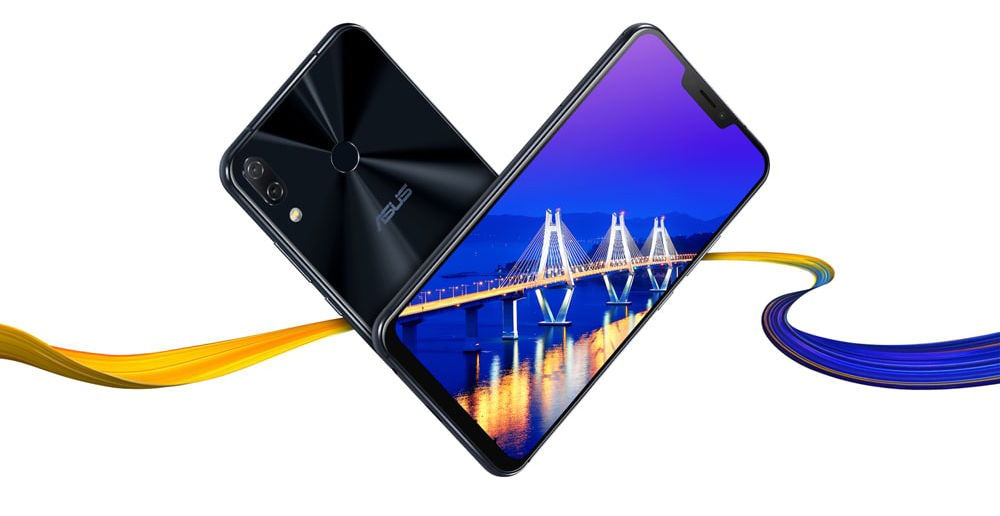
Introduced in February, promised for April, ASUS ’new phone has arrived

Now we’ll show you in detail so you know what to expect.

On the last day of February, ASUS pulled its breath away from its new phone family. The Zenfone 5 family consists of three members, the Zenfone 5 Lite, the Zenfone 5 and the Zenfone 5z, in order from the weakest to the strongest. We’re now dealing with the middle member, the still affordable but already muscular version.
As usual in such cases, we will start the presentation with the central tile. The Qualcomm Snapdragon 636 is a distinctly modern unit, it was officially presented to the public last October. In essence, it is the sweet child of two "older" solutions, the Snapdragon 630 and 660, since the image processor, the modem, the DSP came from the Snapdragon 630, while the processor came from the 660.
The latter is an eight-core solution where the cores are arranged in two clusters, of course in four configurations. The interesting thing about the kernels is that they are not classic ARM solutions, but versions of ARM kernels developed by Qualcomm, better known as Kyro kernels working in proci, namely Kyro 260 kernels. Surprisingly, the clock clocks of the cores do not differ in the two clusters, and both the frugal and power clusters rotate at 1,8 GHz. In addition to the proci, the Adreno 509 graphics accelerator works in the chip.
Qualcomm is also prepared for the challenges of the future in photography. The Snapdragon 636 has been given two ISPs that have enough power for either a maximum of 24 or two 16-megapixel cameras. There are no complaints about external connections either, an X12 modem, Bluetooth 5.1, ac standard WiFi, and NFC support.
In addition to the central unit, depending on the configuration, you will find 4 or 6 GB of memory and 64 GB of built-in storage.
Apparently, ASUS didn’t leave things to chance, it built the phone around a strong and modern mid-range Qualcomm chip, which will be so powerful but remain affordable.
The display of the ASUS Zenfone 5 is the phone, more precisely one of the special features of the Zenfone 5 family. I will stop to write down my opinion on it, so for now we will confine ourselves to the facts.
The display is based on IPS technology, has a diagonal of 6,2 inches and an aspect ratio of 18,7:9. The native resolution is quite high, 1080 x 2246 pixels, which means a pixel density of 402 ppi for this image size. The strange aspect ratio and resolution is due to the fact that ASUS "borrowed" the peninsula extending into the Apple X screen in the case of the Zenfone 5, on which it placed the various sensors and cameras. This formation called the notch is the reason why the aspect ratio resulted in a more squishy display than even modern 18:9 devices. Of course, this arrangement has an advantage, namely the way in which ASUS achieved that the display/front panel ratio was extremely good, when quantified, 83,6 percent of the front panel is the display itself.
ASUS has also tried to find the right solution for cameras. They didn’t go into the megapixel war, they rather opted for a lower resolution with a decent sized sensor and optics. More precisely, not one, but three, because there are two cameras on the front and one on the back.
The self-contained camera has become a tool that is not very steely, but definitely suitable for the purpose. The 8-megapixel sensor works with 1,12-micron pixels, and above it is an f / 2.2 aperture optic. Interestingly, this camera also got EIS, and we could be able to take 1080p videos with it, without shaking, of course.
There are two cameras on the back. One is a 12-megapixel with an aperture of f / 1.8 and an 8-megapixel auxiliary camera with an aperture of f / 2.0. Based on experience so far, the second camera is likely to help with the hardware bokeh effect, i.e., blur depth, perhaps improving image dynamics as well.
We also partially affected the radios at the Qualcomm Snapdragon 636 CPU, but let's run again! Wifi is the state-of-the-art dual-channel, 2,4 and 5 GHz, ac standard solution. Bluetooth is also modern, 5.0 will not disappoint in the field of LTE radio, and satellite navigation will be available almost everywhere on earth, as we also get GLONASS and BDS support in addition to the standard GPS. We haven’t talked about one thing yet, and that is the battery, which has a capacity of 3300 mAh.
As you can see, and as we wrote at the beginning of the article, this phone has become quite powerful, plus it has a modern central unit working in it. The fact that ASUS has also boarded a train called notch is not very surprising, almost everyone prefers this direction, which is a joy for some and annoyance for others. There are alternatives, of course, there are manufacturers who go the usual route, and time will tell if this Apple design or traditional displays will be more successful.

The price remained at the end of the article. The introductory, discounted price of the phone from China is HUF 113. How much or how little it is for everyone to decide for themselves. In fact, we are talking about a mobile phone from good hardware, a quality manufacturer, so the money they are asking for is justified. Whether it’s worth it to us depends on our wallet.
You can already buy it here: ASUS Zenfone 5















